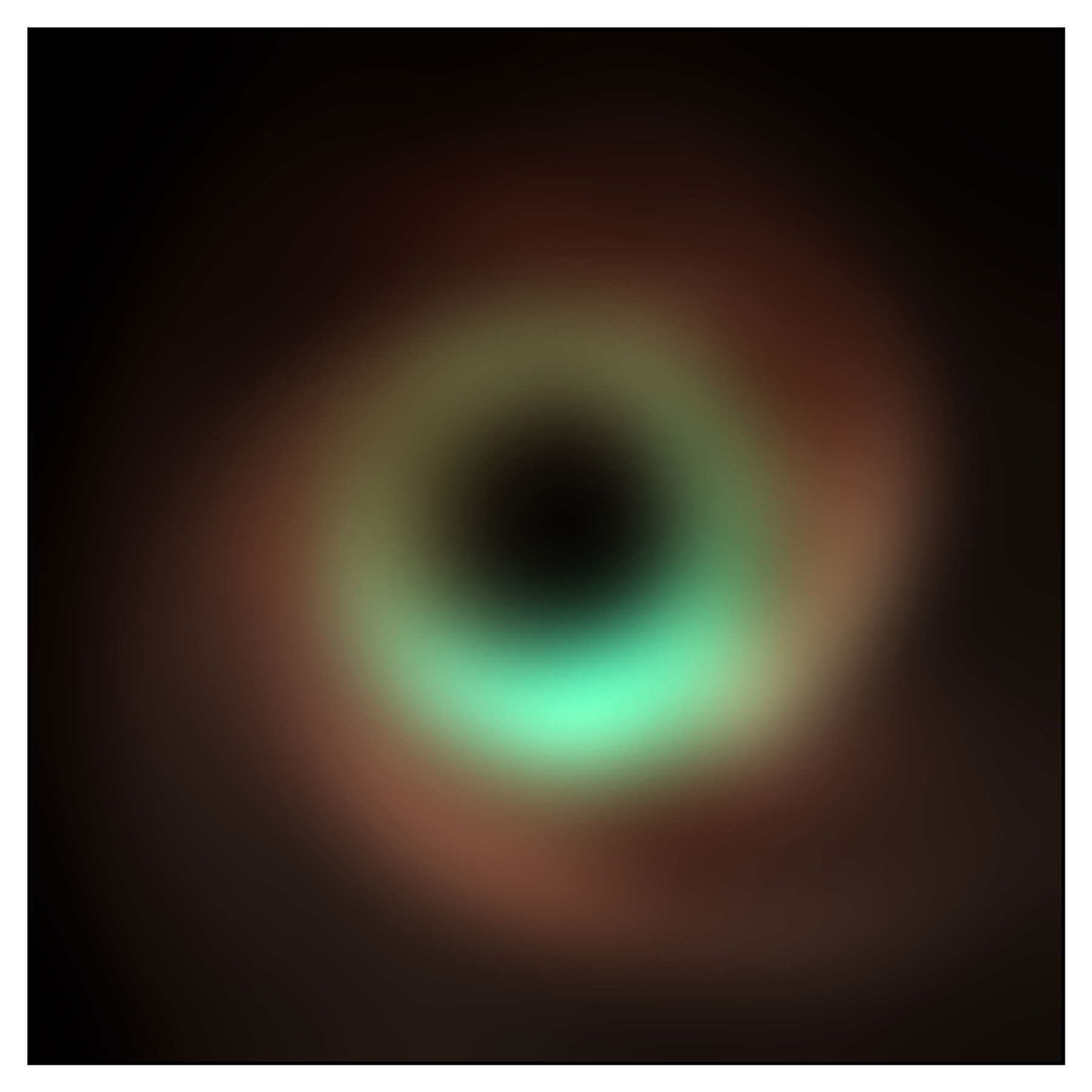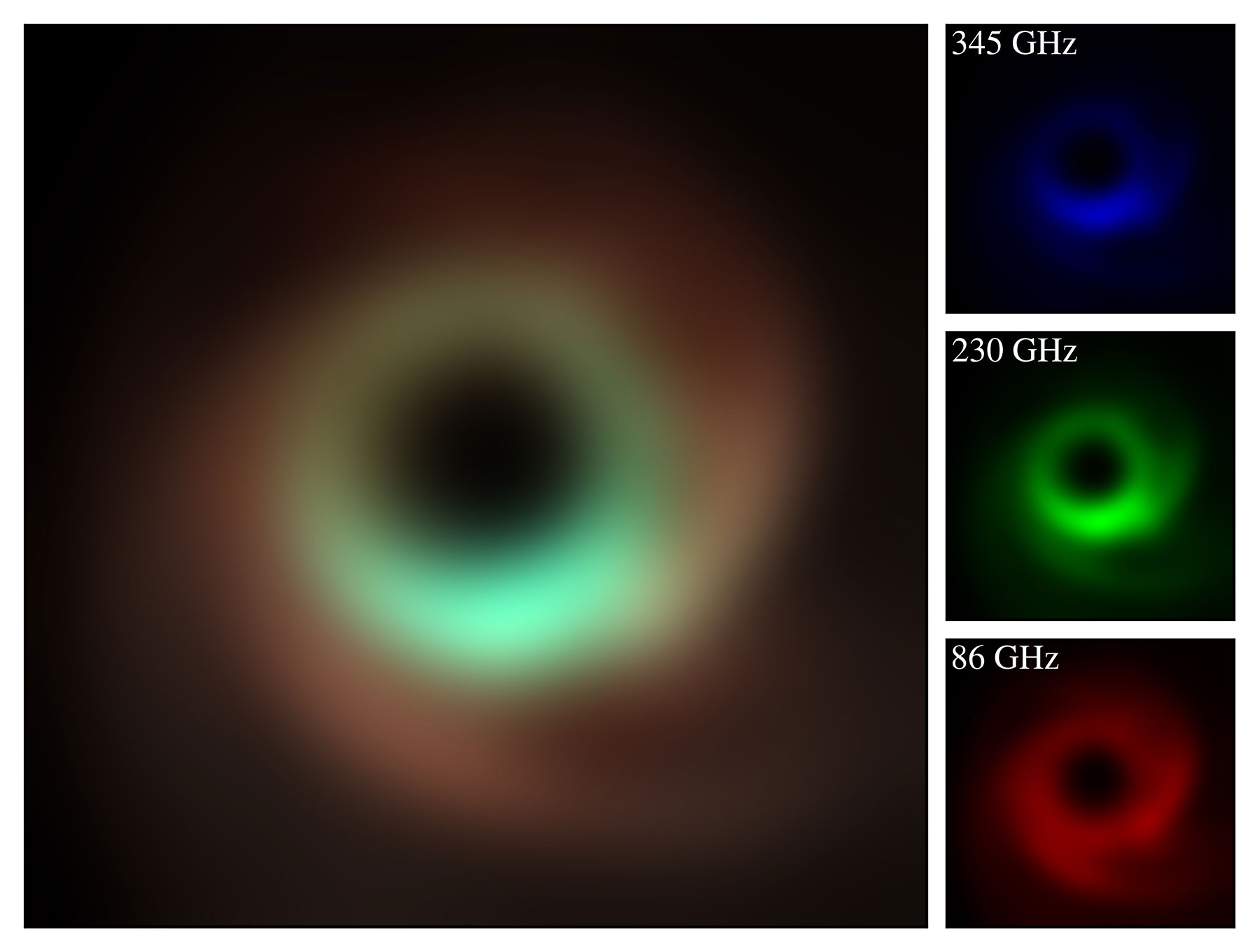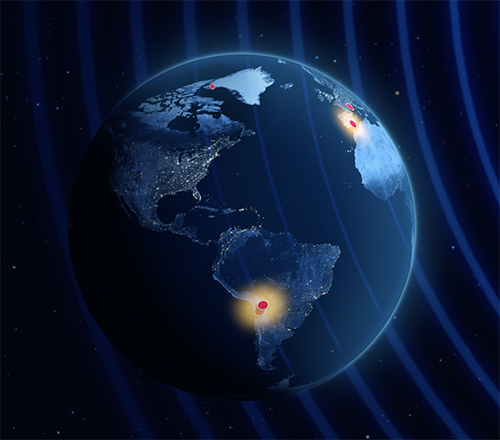Image List
-

This simulated image shows how M87* is seen by the Event Horizon Telescope at 86 GHz (red), 230 GHz (green), and 345 GHz (blue). The higher the frequency, the sharper the image becomes, revealing structure, size, and shape that was previously less discernible.
Credit: EHT, D. Pesce, A. Chael -

On left, this composite simulated image shows how M87* is seen by the Event Horizon Telescope at 86 GHz (red), 230 GHz (green), and 345 GHz (blue). On right, 345 GHz is seen in dark blue, a more compact and sharper view of the supermassive black holes, followed by 230 GHz in green, and 86 GHz in red. The higher the frequency, the sharper the image becomes, revealing structure, size, and shape that was previously less discernible.
Credit: EHT, D. Pesce, A. Chael -

Side-by-side simulated images of M87* show the improvement in clarity and resolution from 230 GHz to 345 GHz. These improvements are allowing scientists to measure the size and shape of black holes more precisely.
Credit: EHT, D. Pesce, A. Chael -

The Event Horizon Telescope (EHT) Collaboration has made the first very long baseline interferometry (VLBI) detections at 345 GHz from the surface of Earth. The new experiment used two small subarrays of the EHT—made up of ALMA and the Atacama Pathfinder EXperiment (APEX) in Chile, the IRAM 30-meter telescope in Spain, the NOrthern Extended Millimeter Array (NOEMA) in France, the Submillimeter Array (SMA) on Mauna Kea in Hawai'i, and the Greenland Telescope—to make measurements with resolution as fine as 19 microarcseconds.
Credit: CfA/SAO, Mel Weiss -

This animation video shows the locations of the radio observatories which participated in a pilot experiment conducted by the Event Horizon Telescope (EHT) Collaboration that obtained the highest-resolution observations from the ground. The test observations detected light from distant galaxies at a frequency of 345 GHz and were made with some of the observatories (in red) that are part of the EHT, a virtual Earth-sized telescope. One of these distant, point-like galaxies is represented at the top right, sending out radio signals all the way to Earth. As Earth rotates and the signal reaches the various observatories, their dots light up. While non-ideal weather conditions hampered the observations at some of the sites, the team was able to observe multiple galaxies using multiple stations around the world.
Credit: ESO, M. Kornmesser